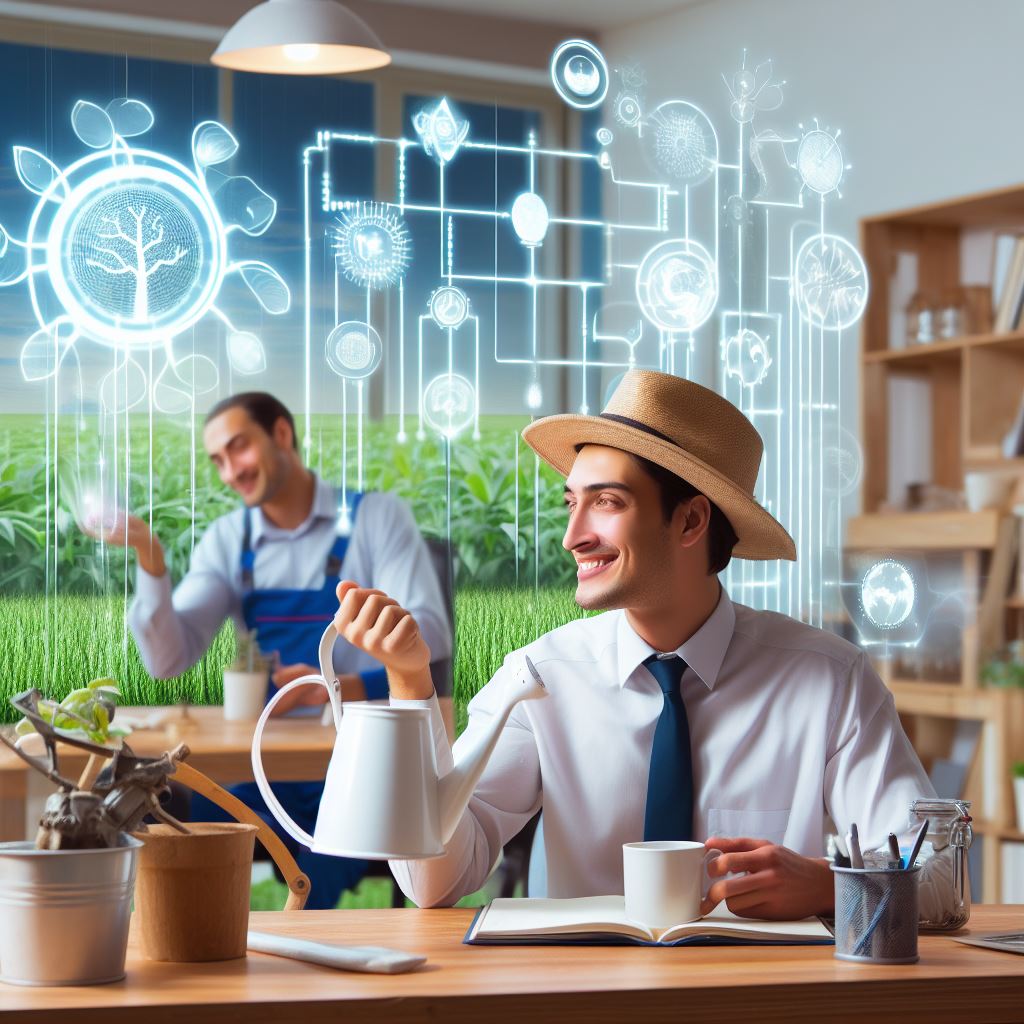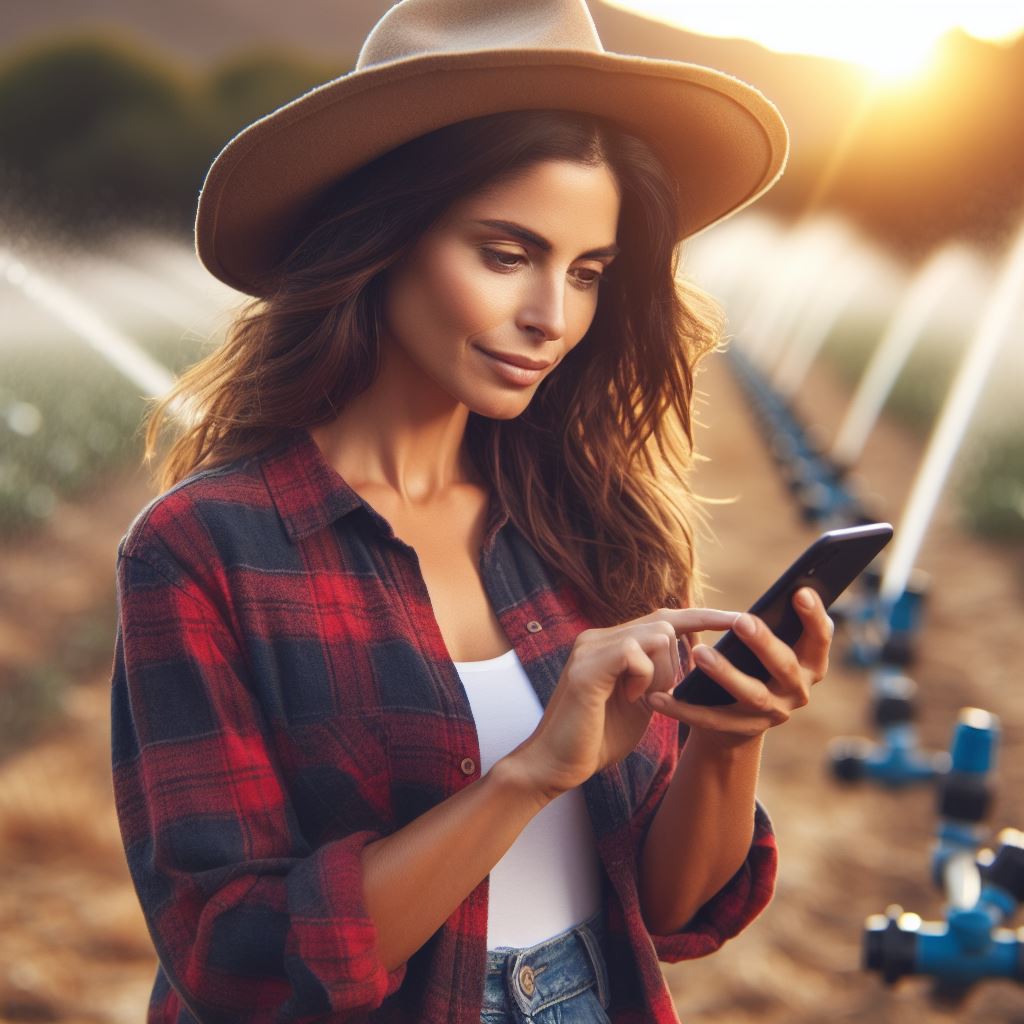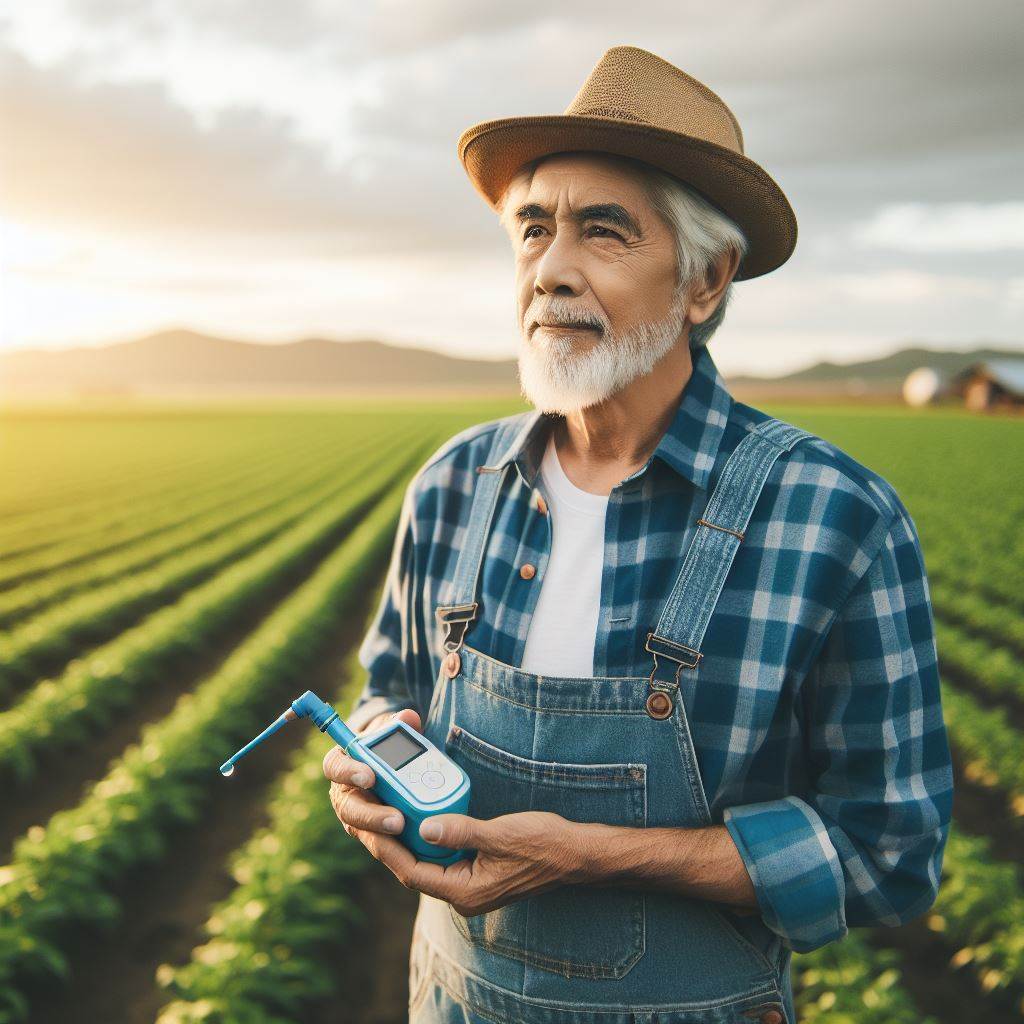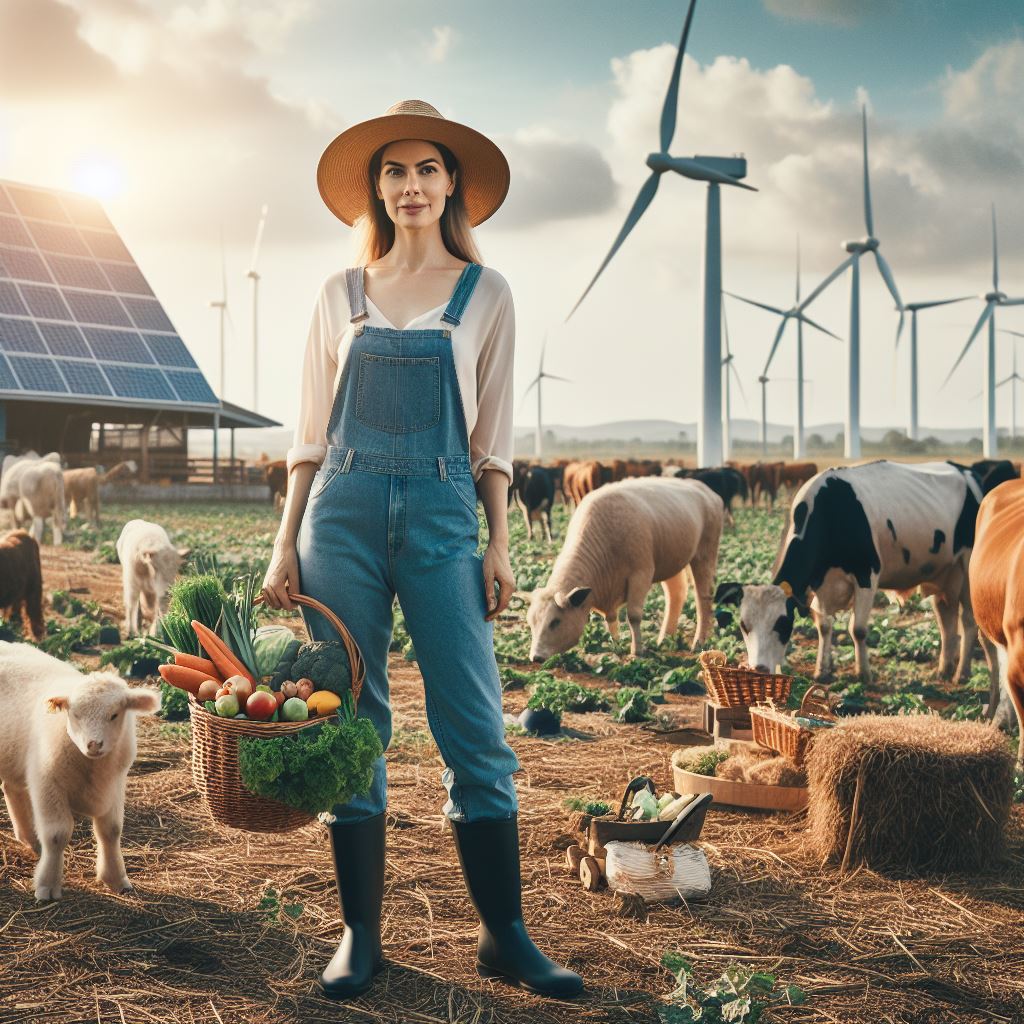Introduction
In today’s agriculture, smart irrigation systems play a crucial role, optimizing water usage and crop yield.
Technological advancements have transformed traditional irrigation methods.
These systems incorporate sensors, data analytics, and AI algorithms.
They monitor soil moisture levels, weather conditions, and plant needs.
By precisely delivering water where and when it’s needed, smart irrigation conserves water resources.
This not only reduces water wastage but also improves crop health and productivity.
Farmers can remotely control and monitor irrigation systems using mobile apps or web interfaces.
This level of control enables them to make real-time adjustments based on changing conditions.
Moreover, smart irrigation systems contribute to sustainability by minimizing water runoff and leaching of fertilizers and pesticides.
Overall, these innovations signify a significant leap forward in agricultural efficiency and environmental stewardship.
Factors to Consider When Choosing a Smart Irrigation System
In today’s technology-driven world, smart irrigation systems have revolutionized the way we maintain our lawns and gardens.
These automated systems are designed to optimize water usage, while still achieving lush, healthy landscapes.
If you’re considering upgrading your irrigation system, there are several factors to consider:
Water-saving capabilities and efficiency
- Look for systems that utilize advanced water-saving technology such as soil moisture sensors or weather-based controllers.
- These features ensure that your plants receive the right amount of water, reducing water waste.
- Systems with adjustable settings and precipitation sensors can adapt to changes in weather conditions.
Compatibility with different types of landscapes and soil types
- Consider the specific needs of your landscape and the soil type you have.
- Some systems are designed for different soil types, such as clay or sandy soil, ensuring optimal water distribution.
- Choose a system that can be easily customized to cater to the unique requirements of your garden.
Ease of installation and use
- Look for systems that offer simple installation without extensive plumbing or wiring requirements.
- Consider user-friendly interfaces and intuitive controls that make programming and adjustments hassle-free.
- Systems with clear instructions and video tutorials can help you set up and operate the system effectively.
Integration with weather data and sensors
- Systems that integrate weather data and sensors can provide real-time information on rainfall, temperature, and evaporation rates.
- This data helps the system adjust watering schedules accordingly, ensuring efficient water usage.
- Look for systems that can receive weather updates wirelessly or connect to a local weather station.
Mobile app control and remote monitoring options
- Consider systems that offer mobile app control for easy access and control from anywhere.
- With a mobile app, you can remotely monitor and adjust the irrigation schedule to match changing needs.
- Look for features like push notifications or alerts that keep you informed about system performance.
By considering these factors, you can find a smart irrigation system that meets your specific needs and helps you achieve an environmentally-friendly and beautifully-maintained garden or lawn.
Embrace the benefits of technology and make the most of modern irrigation solutions!
Transform Your Agribusiness
Unlock your farm's potential with expert advice tailored to your needs. Get actionable steps that drive real results.
Get StartedRead: Farming Data: AI’s Analytical Power
Review of Top Smart Irrigation Systems for 2024
Rachio 3e
Rachio offers a popular smart irrigation controller that uses weather data and soil moisture sensors to automatically adjust watering schedules.
Key features and specifications
- Uses advanced weather intelligence to calculate the optimal watering schedule.
- Compatible with Alexa, Google Assistant, and Apple HomeKit.
- Supports up to 8 zones for efficient watering.
- Offers a mobile app for easy control and monitoring.
Pros and cons
- Pros: Easy installation, water-saving features, intuitive app interface.
- Cons: Some users experienced connectivity issues, limited customization options.
User reviews and ratings
- Many users praised the Rachio 3e for its ease of use and ability to save water.
- It has an average rating of 4.5 out of 5 stars on online marketplaces.
Rain Bird ESP-RZXe
Rain Bird is an American company that has been a leading manufacturer of irrigation products for over 80 years.
They offer a wide range of irrigation products, including sprinklers, controllers, valves, and drip irrigation systems.
Key features and specifications
- Offers hassle-free scheduling with a user-friendly interface.
- Incorporates smart weather features for efficient watering.
- Compatible with popular smart home platforms like Alexa and Google Assistant.
- Supports up to 12 zones for comprehensive irrigation coverage.
Pros and cons
- Pros: Reliable performance, durable construction, excellent customer support.
- Cons: Limited customization options, higher price compared to some competitors.
User reviews and ratings
- Users appreciate the Rain Bird ESP-RZXe for its reliable performance and ease of installation.
- It has an average rating of 4.3 out of 5 stars on online marketplaces.
Hunter X2-10
Hunter Industries, the maker of the Hunter X2-10 smart irrigation controller, is a leading irrigation company with over 60 years of experience in the industry.
The company manufactures irrigation systems and components for residential, commercial, and agricultural applications.
Key features and specifications
- Offers customizable watering schedules for efficient irrigation.
- Includes a weather sensor for precise watering adjustments based on local conditions.
- Supports up to 10 zones for versatile irrigation coverage.
- Compatible with popular smart home platforms like Apple HomeKit and Google Assistant.
Pros and cons:
- Pros: Advanced customization options, reliable performance, user-friendly interface.
- Cons: Requires professional installation, higher price compared to some competitors.
User reviews and ratings:
- Users praise the Hunter X2-10 for its advanced customization options and reliable performance.
- It has an average rating of 4.7 out of 5 stars on online marketplaces.
By choosing one of these top smart irrigation systems, homeowners can efficiently maintain their lawn and garden, save water, and enjoy the convenience of automated watering.
Read: Automated Irrigation: Saving Water & Time

Comparison of the Reviewed Smart Irrigation Systems
Water-saving capabilities
- System A utilizes advanced moisture sensors to accurately determine the moisture level of the soil.
- System B adjusts watering schedules based on real-time weather data to avoid unnecessary irrigation.
- System C uses smart algorithms to optimize water distribution and minimize water wastage.
- System D employs soil sensors and weather forecasts to efficiently water plants only when necessary.
- System E offers customizable watering schedules and provides real-time monitoring of water usage.
Ease of installation and use
- System A provides step-by-step guided instructions and requires minimal technical expertise for installation.
- System B comes with a user-friendly interface and can be easily set up without the need for professional assistance.
- System C offers wireless installation and intuitive controls for convenient operation.
- System D requires basic DIY skills for installation and provides a user-friendly app for seamless control.
- System E offers plug-and-play functionality and can be effortlessly integrated into existing irrigation systems.
Integration with weather data and sensors
- System A integrates with local weather stations to provide real-time weather updates for accurate irrigation scheduling.
- System B offers compatibility with external sensors to enhance data collection and improve watering decisions.
- System C utilizes AI technology to analyze weather data and adjust irrigation accordingly.
- System D incorporates wireless rain and freeze sensors to prevent irrigation during undesirable conditions.
- System E connects with smart weather forecasting services to optimize watering based on predicted weather patterns.
Mobile app control and remote monitoring options
- System A allows users to control and monitor irrigation settings remotely through a user-friendly mobile app.
- System B offers a dedicated mobile app with intuitive features for convenient control and monitoring.
- System C provides real-time alerts and notifications through its mobile app for seamless remote monitoring.
- System D allows users to remotely adjust watering schedules and monitor water usage via its mobile app.
- System E offers a user-friendly mobile app with advanced analytics for comprehensive control and monitoring options.
Pricing and value for money
- System A is competitively priced and offers excellent value for its extensive features and water-saving capabilities.
- System B falls within the mid-range price category and delivers good value considering its ease of use and smart integration.
- System C is a premium system with higher upfront costs but provides exceptional value through its advanced technology.
- System D offers an affordable option with solid water-saving features, making it a cost-effective choice.
- System E is a high-end system with a higher price tag, but its robust features and performance justify the investment.
Basically, the reviewed smart irrigation systems differ in their water-saving capabilities, ease of installation and use, integration with weather data and sensors, mobile app control and remote monitoring options, as well as pricing and value for money.
Each system has its unique strengths and caters to different user preferences and budgets.
Read: Automated Tractors: The Future is Here
Conclusion
This blogpost highlighted the transformative impact of top smart irrigation systems in agriculture.
These systems leverage technology to optimize water usage, enhance crop yield, and minimize environmental impact.
Investing in smart irrigation is crucial for sustainable farming practices. It conserves water, improves productivity, and reduces chemical usage.
Transform Your Agribusiness Online Presence
Stand out with compelling content tailored to engage your audience and drive results. From blog posts to social media, we’ll create what your business needs to grow.
Get StartedFor farmers seeking efficiency and environmental stewardship, integrating smart irrigation systems is paramount.
Further research or consultation on specific system features and compatibility is recommended.




